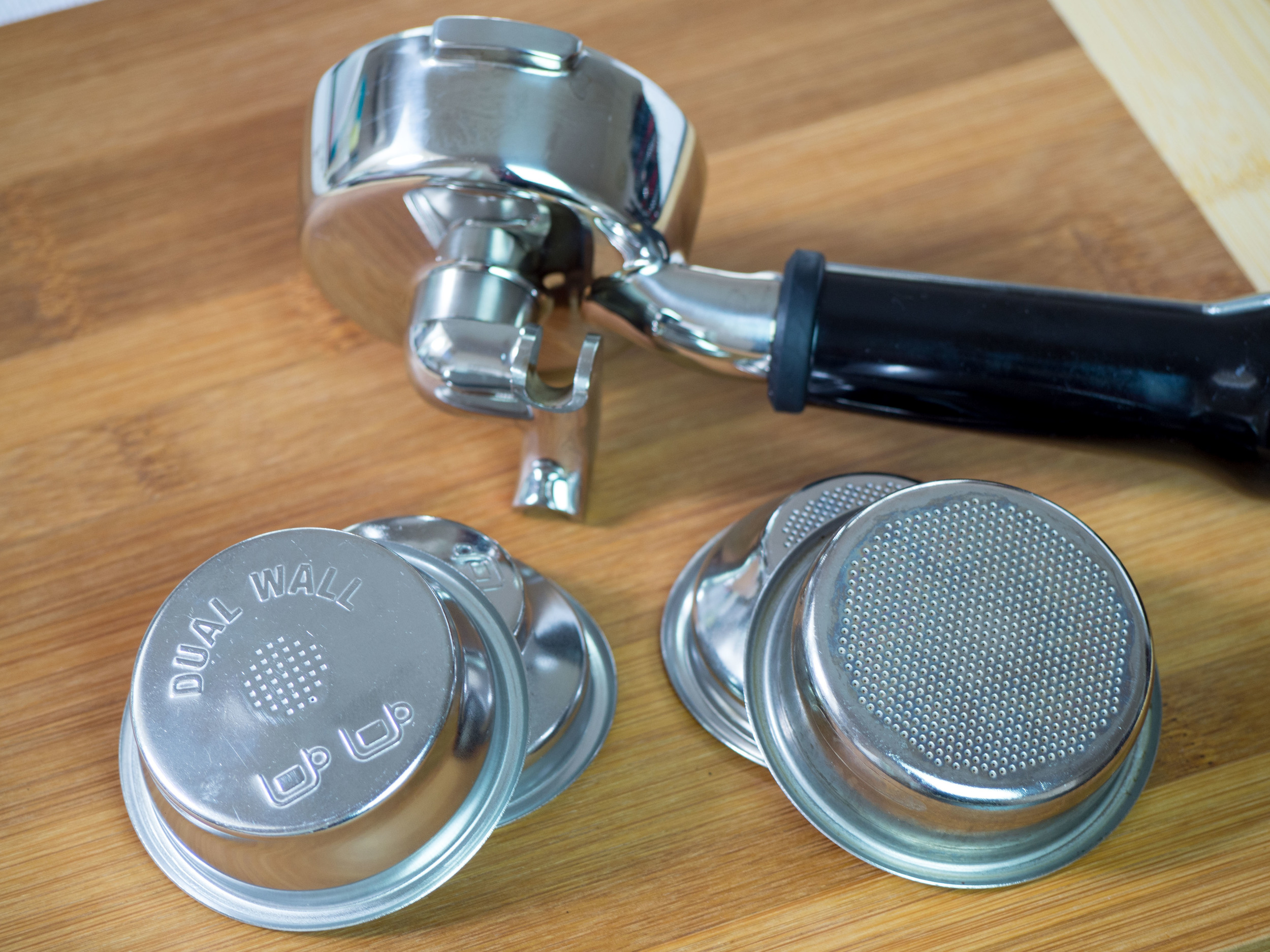When I first started using my Breville (or Sage) espresso machine, I realized that pulling the perfect single shot was not as simple as just halving the coffee for a double shot. My machine came with two filter baskets: one for single shots and one for doubles. While making a double shot was quite straightforward, perfecting a single shot involved much more experimentation and fine-tuning. Get a detailed look at the precision and features in our Breville Dual Boiler BES920XL review
Key Differences Between Single and Double Shot Baskets
One of the initial things I observed was the difference in the design of the single and double baskets. The single basket has a tapered or conical shape, whereas the double basket is designed with a flat bottom. This seemingly small difference has a major impact on how water flows through the coffee grounds. Learn about the sleek design and functionality in our Breville Barista Touch Impress review
With the single basket, the narrower base tends to lead to uneven extraction, often resulting in water flowing more quickly through the center. This uneven flow can create channeling, leading to areas of the coffee being under-extracted while others are over-extracted. Compare performance and usability in our Breville Barista Express Impress vs Pro review
As a result, single shots often lacked the full-bodied, balanced flavor that I could achieve by simply splitting a double shot into two cups. In contrast, a double shot consistently delivered a richer and more satisfying taste. Discover the key differences between these two models in our Breville Barista Pro vs Express review
Improving Your Technique for Single Shots
Determined to master the single basket, I experimented with different techniques. Over time, I found several key adjustments that significantly improved my results. Explore the advanced capabilities in our Breville Oracle vs Oracle Touch review
Increase the Coffee Dose
A major breakthrough came when I adjusted the coffee dose. Initially, I thought that simply halving the dose used for a double shot—around 18 grams—would work. However, this approach led to weak, watery shots that brewed too fast.
By increasing the dose to approximately 10 grams, I found better extraction times and a noticeable improvement in flavor. This simple change added depth and richness to my single shots, making them far more enjoyable.
Adjust the Grind Size
Another crucial factor was the grind size. My early attempts at using the single basket resulted in shots that brewed too quickly, signaling that my grind was too coarse. By shifting to a finer grind, I was able to improve both shot timing and flavor balance.
Using a finer grind slows down the water flow, which helps to achieve more even extraction. This adjustment made a significant difference in achieving a well-rounded, flavorful espresso.

Use a Scale and Stick to a 1:2 Brew Ratio
Precision was key, and using a scale became crucial to achieve consistent results. I adhered to a 1:2 brew ratio: for every gram of ground coffee, I aimed to pull twice that weight in liquid espresso. With 10 grams of coffee, my target was 20 grams of espresso.
This ratio helped ensure that my single shots were neither weak nor overly diluted, resulting in a concentrated and balanced espresso.
Don't Forget to Purge the Grinder
Switching between the single and double baskets meant I needed to pay extra attention to my grinder. Each time I adjusted the grind size for a single shot, I made sure to purge any leftover grounds to maintain consistency.
This step is particularly important if you frequently alternate between baskets. Residual grounds can affect the grind size and throw off the flavor balance of your shot.
Overcoming Challenges and Enjoying the Rewards
Using the single basket posed more challenges than the double, but it was ultimately rewarding as I refined my technique. It required more precision and patience, but the payoff was a clean, concentrated shot that worked beautifully in milk-based drinks like lattes and cappuccinos.
For those who prefer a lighter, more delicate espresso flavor or need a single shot for their milk drinks, these adjustments are worth exploring. Keep in mind that each espresso machine and individual taste may require further tweaks. Experiment with different grind sizes, doses, and extraction times to discover what works best for your palate.
Conclusion
Mastering the single basket with a Breville or Sage espresso machine may seem intimidating at first due to its conical design and the precise adjustments required. However, with persistence and a willingness to experiment, you can create a wonderfully balanced single shot.
Perfecting the use of the single basket has not only improved my espresso-making skills but also deepened my appreciation for the craft of brewing. I encourage you to experiment and enjoy the satisfaction that comes with pulling the perfect single shot.
